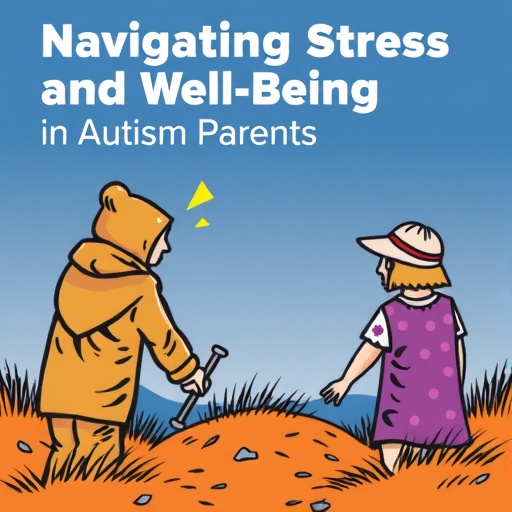The use of antibiotics drives the development of antibiotic resistance, a major threat to public health worldwide. But these drugs also carry the risk of harm to individual patients, including children. According to a new analysis published in the Journal of the Pediatric Infectious Diseases Society, antibiotics led to nearly 70,000 estimated emergency room visits in the U.S. each year from 2011-2015 for allergic reactions and other side effects in children. The study helps quantify the risk posed by specific antibiotics in children across different age ranges.
"For parents and other caregivers of children, these findings are a reminder that while antibiotics save lives when used appropriately, antibiotics also can harm children and should only be used when needed," said lead author Maribeth C. Lovegrove, MPH, Division of Healthcare Quality Promotion, Centers for Disease Control and Prevention. "For health care providers, these findings are a reminder that adverse effects from antibiotics are common and can be clinically significant and consequential for pediatric patients."
For their analysis, researchers used nationwide estimates for outpatient antibiotic prescriptions and data from a nationally representative sample of hospitals for emergency room visits attributed to the use of antibiotics by children aged 19 and younger. Most of the visits (86 percent) were for allergic reactions, such as a rash, pruritus (itching), or angioedema (severe swelling beneath the skin). The risk of a visit varied by child age and type of antibiotic, but for most antibiotics, children aged 2 or younger had the highest risk of an adverse drug event. Forty-one percent of visits involved children in this age group. Amoxicillin was the most commonly implicated antibiotic in adverse drug events among children aged 9 or younger, while sulfamethoxazole/trimethoprim was most commonly implicated among children 10-19 years old.
Antibiotics are among the most commonly prescribed medications for children, but prior research has suggested that nearly a third, if not more, of outpatient pediatric prescriptions for antibiotics are unnecessary. Efforts to reduce antibiotic overprescribing have largely focused on reducing antibiotic resistance. However, studies have shown that these longer-term societal risks are not always prioritized when clinicians are making decisions about treatment.
"By considering available data on the immediate risks to individual patients, clinicians, and parents and caregivers, can better weigh the risks and benefits of antibiotic treatment," Lovegrove said.
The researchers were not able to determine which antibiotic prescriptions were unnecessary or inappropriate in the study, because data for antibiotic indications, doses, and durations of therapy were not available. The study also likely underestimates how often children experience adverse side effects from antibiotics because the analysis includes only adverse drug events that resulted in a visit to an emergency room. Adverse drug events treated in other settings, such as an urgent care facility or a doctor's office, or cases for which no health care was sought, were not included. Also, adverse events that are less likely to be diagnosed in the emergency room setting (e.g., Clostridium difficile infections that can cause severe diarrhea after antibiotic use) were not included.
###
Fast Facts
- Antibiotics are among the most commonly prescribed medications in children, but they can lead to adverse drug events and should be used only when needed.
- From 2011-2015, antibiotic use in children led to nearly 70,000 estimated emergency room visits each year for allergic reactions and other side effects.
- The risk of a visit varied by child age and type of antibiotic used, but for most antibiotics, children aged 2 or younger had the highest risk of an adverse drug event.
Editor's Note: The study was funded by the Centers for Disease Control and Prevention, and is embargoed until 1:05 a.m. ET on Thursday, Aug. 23. For an embargoed copy, please contact Terri Christene Phillips, MSA ([email protected], 703-299-9865).
The Journal of the Pediatric Infectious Diseases Society is dedicated to perinatal, childhood, and adolescent infectious diseases. The journal, which recently received its first Impact Factor, publishes original research articles, clinical trial reports, guidelines, and topical reviews, with particular attention to global pediatric communities. It is the official journal of the Pediatric Infectious Diseases Society (PIDS).
PIDS membership encompasses leaders across the global scientific and public health spectrum, including clinical care, advocacy, academics, government, and the pharmaceutical industry. From fellowship training to continuing medical education, research, regulatory issues and guideline development, PIDS members are the core professionals advocating for the improved health of children with infectious diseases both nationally and around the world, participating in critical public health and medical professional advisory committees that determine the treatment and prevention of infectious diseases, immunization practices in children, and the education of pediatricians. For more information, visit http://www.pids.org.
Media Contact
Terri Christene Phillips
[email protected]
703-299-9865
@/PIDSociety
http://dx.doi.org/10.1093/jpids/piy066




